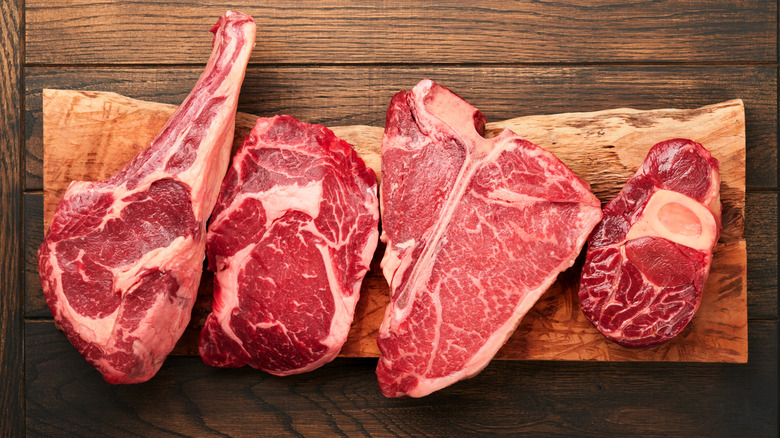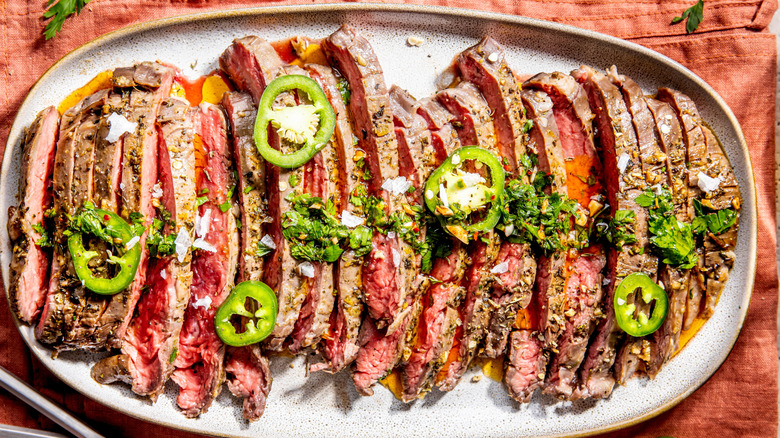Which Cuts To Skip For A Reverse Sear Steak
A method popularized by chef and writer J. Kenji López-Alt nearly two decades ago, reverse searing steak involves cooking a quality cut of beef low and slow in the oven first and then searing the steak in a heavy pan on the stovetop for a nice, caramelized crust. Though the method is simple enough, it's important not to use any cut of meat less than at least 1.5 inches thick, such as flank, skirt, or flat iron steak.
When using a nice, thick piece of meat like T-bone, porterhouse, ribeye, or filet mignon, reverse searing is a boon. When using this method, your resulting steak will be more tender than if it was simply pan-fried. By cooking steak at a low temperature in the oven, you are essentially speed-aging the meat, like dry aging, it's a process that takes advantage of cathepsins, natural enzymes that slowly break down muscle proteins.
Avoid thin cuts when reverse searing steak
A method that's often used to make a prime rib roast or pork tenderloin, reverse searing is a choice way to cook big, thick pieces of meat, keeping them tender and juicy on the inside and yet flavorfully caramelized on the outside. If you try to use this method with any steak thinner than 1.5 inches, it will be all too easy to overcook, ruining a perfectly good piece of meat.
There are great ways to effectively cook thinner cuts of steak such as flank or flat iron, such as slicing them up for stir fry or grilling after a short, 20-minute marinade. Using the reverse sear method does take longer than grilling or cooking a steak on the stovetop, but that's its only real downfall. But if you want to try this method, make sure your steak is a nice thick cut — think ribeye, NY strip, porterhouse, or filet mignon.

